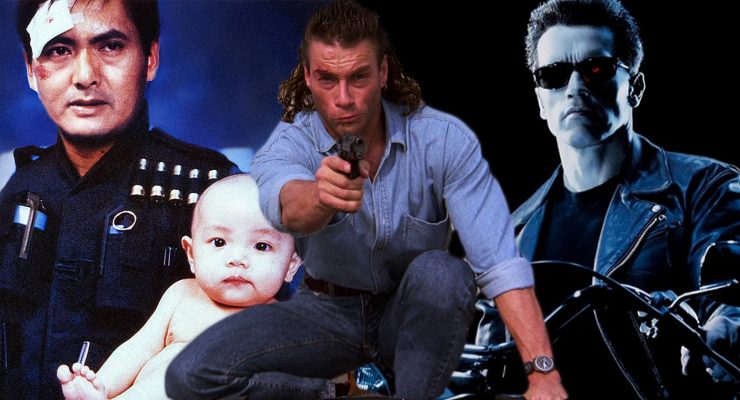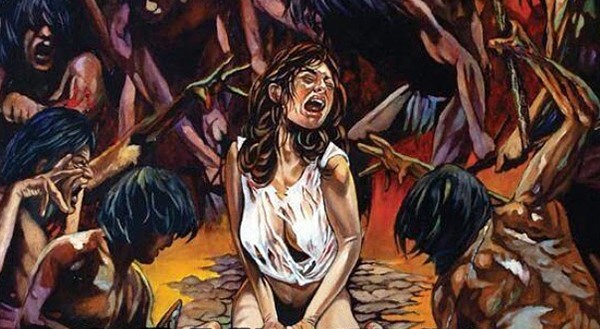Trevor Hogg chats with Academy Award-winning visual effects supervisor Eric Barba…
“It goes back to my love for the automobile and wanting to be a car designer,” explains Digital Domain Visual Effects Supervisor Eric Barba as to why he attended the Art Center College of Design situated in Pasadena, California. “One of the things that you learn in design school, and I certainly did at the Art Center, is your fundamentals. You learn colour theory, perspective, [and] composition over and over again; I drew on all that knowledge and background when I got into the visual effects business. It was very early on that I got in. A bunch of people knew how to operate a computer but there weren’t a lot of well-trained artists who knew how to use a computer and make beautiful imagery.” The young artist graduated into the world of advertising. “I did the first ever full CG car commercial.”
The emerging talent delved into the television by working on SeaQuest DSV (NBC, 1993 to 1996) as a CGI Senior Animator and Sliders (Fox, Sci Fi Channel, 1995 to 1999) as a CGI Effects Supervisor. “To be honest with you anything is easier than episodic television,” admits Eric Barba. “As any artist you want time and to craft something you’d be happy with, but with episodic you have so little time and few resources that you’re never quite happy with it. The commercial world would be next media that has a short schedule. I can say the same thing there. If you can get happy with what you can do there then when you make the step into feature film it’s like, ‘Oh, my God. I have the luxury of time and money.’ Those days are quickly dissipating because the schedules are getting shorter and the budgets tighter, but at least you can plan and work with other people to get what you need.”
The opportunity to work in the feature film industry presented itself when an Art Center College of Design alumnus recruited the rising talent to be a Digital Artist for The Fifth Element (1997). “Mark Stetson asked me to work on that film,” recalls Eric Barba. “I had been doing these CG car commercials and he saw my work; Mark was impressed and asked me to come over to supervise the lighting for the cars flying around the downtown.” Barba enjoyed the experience and got along with the French director helming the science fiction project. “Luc Besson and I hit it off right off the bat. He’s a car guy likewise. I loved it. I would render something out, [and] change the pallet. I didn’t get a credit on the film because of politics. It was great working with Mark.”
“David and I met doing a commercial,” reveals Eric Barba whose frequent collaborations with filmmaker David Fincher resulted in him wining an Oscar for Best Visual Effects for the reverse aging tale The Curious Case of Benjamin Button (2008). “Button was the opportunity of a lifetime. I worked my ass off and it worked out pretty well.” Barba was sought out to assist a Fincher protégé who was making his feature directorial debut. “Tron: Legacy [2010] was an enormous undertaking because I had the fortune to run with the whole thing and to help Joe Kosinski see his vision on the big screen.” He adds, “I was literally finishing Benjamin Button as I was starting Tron. It was overlapping. I never got to slow down and enjoy Benjamin Button. I had to fly back for the Academy Awards because of the schedule. It posed incredible challenges in totally different ways.” In regards to the latest offering by Fincher, he believes that The Girl with the Dragon Tattoo (2011) is very much like Zodiac (2007) as “our work there is meant to be seamless and nobody would know we touched it.”
Questioned as to what has enabled him to survive in a constantly changing industry, Eric Barba replies, “A lot of it is luck, timing, and working your butt off to do good work so that people will ask for you again.” There are key elements required to be a successful visual effects supervisor. “You have to be a good leader, problem solver, and diplomat.” Along with having a technical understanding, the ability to improvise is critical. “‘I can’t put blue screen back here but I’m going to do this. Is that going to affect you?’ You have to be able to run with it and work on your feet pretty quick.” As to his definition for a great visual effect, Barba remarks, “Ultimately, the goal of the visual effect is not to show itself off but to assist the director’s storytelling needs. Sometimes we don’t get any acknowledgement from our peers because they didn’t even notice what we’ve done.”
In regards to the difference between handling everyday rather stylized environments, Eric Barba believes, “Putting an effect into a live-action, at least for me, is easier because usually the director has given you a pallet to work with. You just have to make it look like what they’ve given you and you have lots of tools to accomplish that.” He clarifies, “It’s easier because all the clues are there. There’s no guessing of what it should look like because you have this amazing imagery. When you’re making it up, you’re making it all up from scratch. You’re not putting rendered CG pieces into live-action plates. You’re creating every single pixel in the frame and making decisions in every single frame. I think that’s a much bigger challenge.” Reflecting on his career, Barba states, “I can’t image being able to do my job without all those years doing commercials.” Having helmed numerous commercials, the Academy Award-winner is open to the idea of stepping behind the camera for a feature length project. “I would love to but so far they’ve kept me busy doing what I do.”
Many thanks to Eric Barba for taking the time for this interview.
For more on Eric Barba, visit his official site, and be sure to check out Blending In: The Making of The Girl with the Dragon Tattoo.
Trevor Hogg is a freelance video editor and writer who currently resides in Canada.











